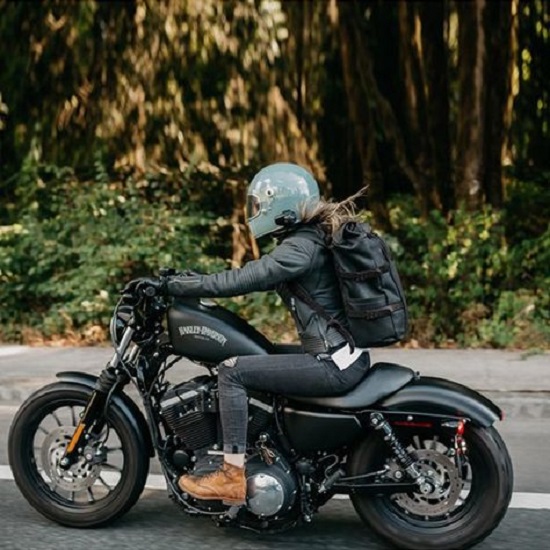Jun 17, 2024
How does a motorcycle work: Hit the Road
Motorcycles are exhilarating machines that offer a unique riding experience. But how exactly do these two-wheeled wonders work? This article dives into the core mechanics of a motorcycle, exploring its essential components and how they work together to propel you forward.
The Engine: Power at the Heart
The engine is the heart of a motorcycle, just like it is in a car. It’s responsible for converting fuel into energy that drives the motorcycle forward. Motorcycles typically use gasoline engines, similar to those in cars, but often with smaller sizes and configurations.
Here’s a breakdown of how a motorcycle engine works:
Fuel and Air:
The engine mixes gasoline and air to create a combustible mixture. This mixing often happens in a part called the carburetor or fuel injector.
Ignition:
A spark plug ignites the fuel-air mixture in the engine’s cylinders. This rapid burning creates hot gases that push down on the pistons.
Pistons and Movement:
The pistons are connected to a crankshaft by connecting rods. As the hot gases push down on the pistons, the crankshaft rotates.
The crankshaft’s rotation is what ultimately creates the power that drives the motorcycle forward.
Transmission: Delivering Power to the Wheel
The engine produces power, but it needs to be delivered to the rear wheel to make the motorcycle move. This is where the transmission comes in. The transmission takes the rotational power from the crankshaft and adjusts it to the needs of the motorcycle.
Motorcycles use transmissions similar to cars, with gears that allow the rider to change the gear ratio. Lower gears provide more power for acceleration, while higher gears are for maintaining speed.
Clutch: Engaging and Disengaging Power
The clutch is a control lever operated by the rider’s hand. It allows the rider to connect or disconnect the engine’s power from the transmission. This is important for:
- Starting: When the motorcycle is stopped, the clutch disconnects the engine from the transmission. This allows the engine to start without the rear wheel spinning.
- Shifting Gears: The clutch is used briefly to disconnect the engine while the rider changes gears. This allows for a smooth transition between gear ratios.
- Stopping: The clutch is disengaged when the motorcycle comes to a stop, preventing the engine from stalling.
Brakes: Stopping Safely
Just like any vehicle, motorcycles need brakes to slow down and stop safely. Motorcycles typically have two brake systems:
- Front Brake: Controlled by a hand lever on the right handlebar, the front brake applies pressure to the front wheel.
- Rear Brake: Controlled by a foot pedal on the right side, the rear brake applies pressure to the rear wheel.
For maximum stopping power, both brakes are used together. However, riders need to be aware that applying too much rear brake can lock the wheel, causing the motorcycle to skid.
Steering and Balance: The Art of the Ride
How does a motorcycle work? Steering a motorcycle is different from steering a car. Motorcycles rely on a concept called counter-steering to turn. When the rider wants to turn left, they push the left handlebar slightly. This countersteers the motorcycle to the right for a brief moment, then the motorcycle naturally falls into the left turn.
Balance is crucial for motorcycle riding. Motorcycles don’t have a self-balancing mechanism like cars. Riders maintain balance by shifting their body weight and by using the handlebars for steering corrections.
Motorcycles are more than just machines; they’re a combination of engineering and rider skill. Understanding how the engine, transmission, clutch, brakes, steering, and balance work together is essential for safe and enjoyable riding. So, if you’re ever curious about how motorcycles work, this article provides a basic roadmap to understanding these fascinating machines.
Fueling the Ride: Inside the Motorcycle Engine
How does a motorcycle work? We learned that the engine is the heart of a motorcycle, but how exactly does it convert fuel into usable power? Let’s take a closer look at the typical four-stroke engine cycle:
-
Intake: The piston moves down, creating suction in the cylinder. A valve opens, allowing a mix of air and fuel (gasoline) to enter the cylinder.
-
Compression: The piston moves back up, compressing the air-fuel mixture. The valve closes to trap the mixture in the cylinder.
-
Combustion: A spark plug ignites the compressed air-fuel mixture, causing a small explosion that pushes the piston back down.
-
Exhaust: The piston moves up again, forcing out the burnt gases through an exhaust valve. The cycle then repeats, creating continuous power.
Modern motorcycles typically use fuel injection systems instead of carburetors for a more precise air-fuel mixture. This can lead to better performance and fuel efficiency.
Gearing Up: The Transmission Explained
The transmission in a motorcycle is like a complex set of gears working together. It takes the rotational power from the engine and adjusts it to the needs of the motorcycle. Here’s a simplified breakdown:
-
Multiple Gears: Motorcycles have multiple gears, typically 4 to 6, that offer different gear ratios. Lower gears provide more power for starting and accelerating, while higher gears are for maintaining speed at a constant engine RPM.
-
Changing Gears: The rider controls the gear changes using a clutch lever and a shifter pedal. The clutch lever temporarily disconnects the engine from the transmission while the rider shifts gears, allowing for a smooth transition.
-
Finding the Right Gear: Choosing the right gear is important for efficient riding. Lower gears are used for starting, uphill climbs, or slow maneuvering. Higher gears are used for cruising at highway speeds.
Safety First: The Braking System
How does a motorcycle work? Motorcycles rely on two independent brake systems to slow down and stop safely:
-
Front Disc Brake: The front brake, controlled by a hand lever on the right handlebar, is the primary braking system. It provides significant stopping power by squeezing a disc with brake pads against the front wheel.
-
Rear Disc Brake: The rear brake, controlled by a foot pedal on the right side, provides additional stopping power. However, overuse of the rear brake can lock the wheel, causing the motorcycle to skid.
Riders practice controlled, balanced braking using both the front and rear brakes to ensure safe stopping.
Remember, this article provides a basic overview of how motorcycles work. If you’re interested in learning more about motorcycles, especially if you’re considering riding one, it’s important to take a proper motorcycle safety course.




